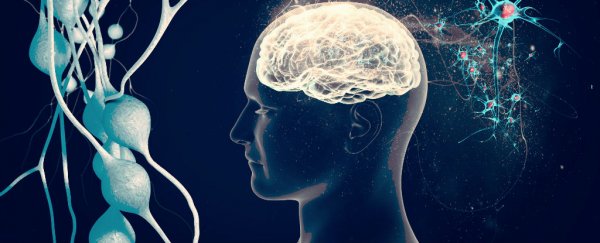There's much about the brain we still have to discover, and one of the unanswered questions surrounding this most vital of organs is how it uses up most of its energy. The brain claims around 20 percent of the total oxygen used to fuel our bodies, yet we don't know where most of that goes. Now an IBM researcher thinks he might have solved the mystery.
James Kozloski, who works as a computer neuroscientist at IBM's Thomas J. Watson Research Centre, says the brain is constantly looping signals through established pathways - pathways that can be thought of as city street maps for our minds. The brain repeatedly retraces its steps through these pathways, covering three different areas of functionality: sensory (what's currently happening), behavioural (what we can do about it), and limbic (what it means to us).
Kozloski calls this closed-loop model the "Grand Loop", and hypothesises that these repeated cycles are the reason the brain needs so much energy, even when we're not actively solving maths puzzles or trying to juggle. He successfully ran his hypothesis through the neural tissue simulator at IBM, which can produce an accurate model of the way neurons fire in the human brain.
"The brain consumes a great amount of energy doing nothing," Kozloski explained to Popular Science. "It's a great mystery of neuroscience. You don't spend that much energy on noise unless there's a really good reason."
Kozloski thinks his idea could explain how we draw from past experiences to inform our reaction to new ones - we quickly consult our 'city map' to decide what to do next.
It could also help in the treatment of degenerative brain diseases such as Huntington's, he says, because it might provide an explanation for why one defective gene is able to cause such havoc inside the brain, knocking the Grand Loop off course.
The research has been published in the journal Frontiers in Neuroanatomy.
The next challenge for the researcher and his colleagues is to look at how the brain chooses the pathways that it does, and how this internal loop has evolved: "If it wasn't doing something important, it would have been weeded out long ago," said Kozloski.
The work at IBM ties in with a previous study reported by Scientific American. In the earlier report, scientists from the University of Minnesota Medical School suggested that up to a third of the brain's energy goes towards housekeeping tasks - perhaps keeping the lights on in the 'city streets' of neurons and tissue that Kozloski has described.
As brain scanning and brain simulating technology improves, we should get closer to solving the mystery once and for all.
